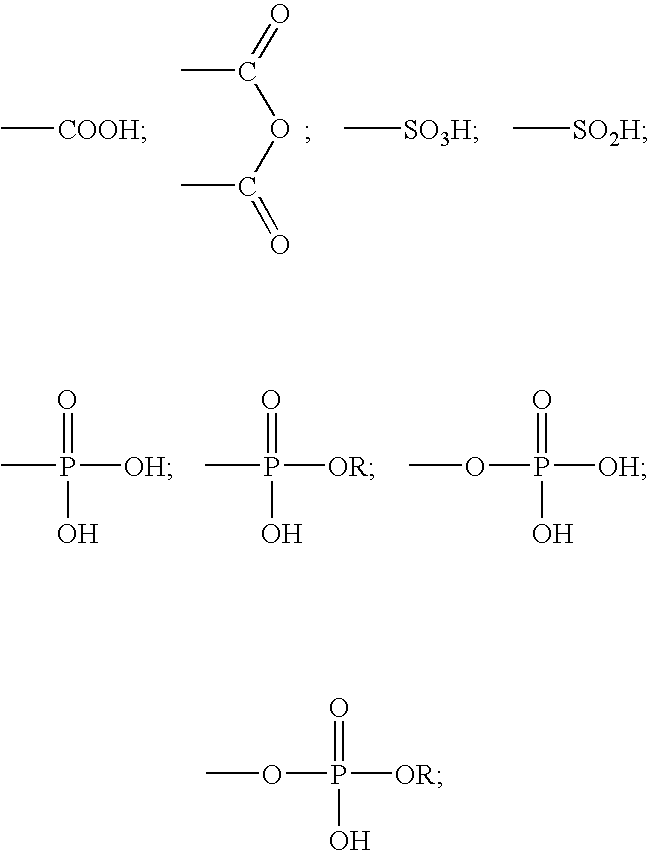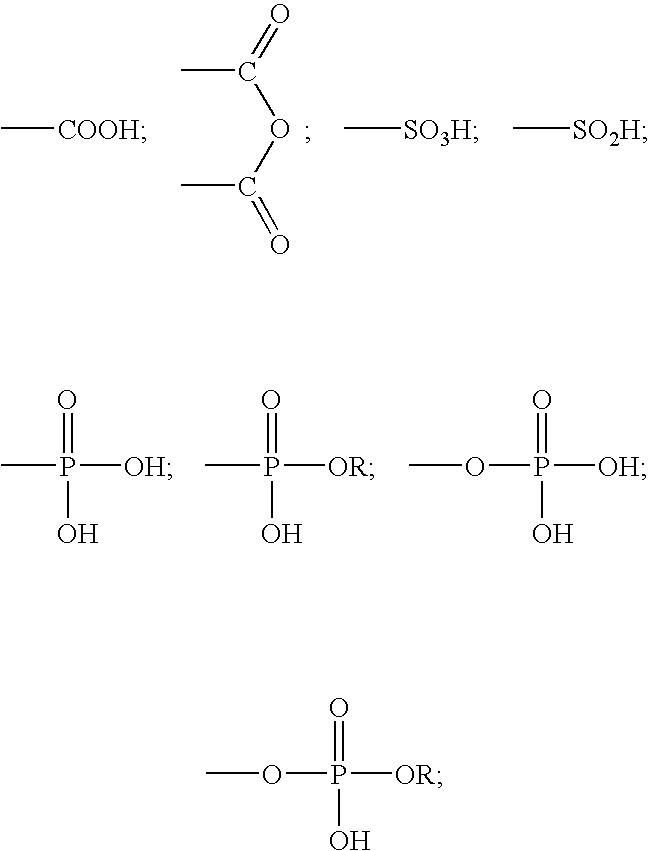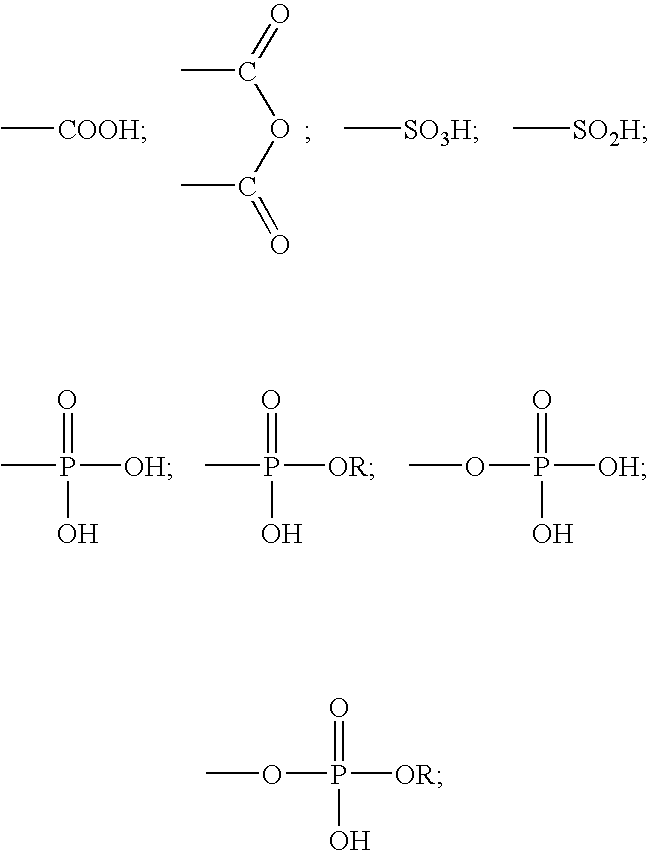Methods of using two-part self-adhering dental compositions
a self-adhering, dental composition technology, applied in the field of self-adhering dental compositions, can solve the problems of reducing the efficiency of the dental surgeon, so as to improve the bond strength and simplify the method for the practitioner and patien
- Summary
- Abstract
- Description
- Claims
- Application Information
AI Technical Summary
Benefits of technology
Problems solved by technology
Method used
Image
Examples
example 1
[0071]In making all the pastes in this example, first all the monomers and any ingredients soluble in the resin mixture were mixed together to make a homogeneous liquid mixture, and then the fillers (TS-530, ST-OX-50, Sr / Zn FAS Glass, or Barium Glass) were blended into the liquid mixture to make the paste.
[0072]A paste / paste two-part self-adhering dental cement composition was prepared and tested as an example. A first paste using 1,1,3,3-tetramethylbutyl hydroperoxide (TMBHP) / cumene hydroperoxide (CHP) oxidizing agents and acidic monomers GDM-P, and a second paste using 1-(2-pyridyl)-2-thiourea (PTU) as the reducing agent, was made.
[0073]
First (Catalyst) PasteBisGMA3.23GDM-P16.96HEMA7.27GDM4.85BHT0.05TMBHP0.57CHP0.57TS5302.00ST-OX-503.23Barium Glass61.28
[0074]
Second (Base) PasteUDMA22.00ETMPTA5.50CQ0.17MEHQ0.010EDMAB0.28PTU0.54TS-5303.00ST-OX-504.80Sr / Zn FAS Glass63.70
When mixed at 1:1 ratio (by volume), the above first and second pastes had a set time of 3 minutes 50 seconds (3′50...
example 2
[0076]The two pastes from Example 1 were mixed at 4:1 (first paste:second paste) ratio (by volume). The set time was 5′40″. Bonding strength of the mixed composition was determined as in Example 1. With the two pastes mixed at a 4:1 (by volume) ratio, the bond strength to an unetched and unprimed dentine substrate was 8.87 MPa (average of 6 specimens) in self-cure mode. This is almost double the bond strength of that obtained over that in Example 1 using a 1:1 (by volume) ratio.
[0077]The above examples clearly illustrate the usefulness of the inventive method. The inventive composition may be used as a dental restorative composition, an endodontic composition, and an orthodontic composition. Useful restorative compositions include a dental filling material, a cement, a liner, a base, a pit / fissure sealant, or an adhesive composition. Useful endodontic compositions include an endodontic sealing and / or filling composition for the sealing and filling of a root canal, or an endodontic a...
PUM
| Property | Measurement | Unit |
|---|---|---|
| mean particle size | aaaaa | aaaaa |
| bond strength | aaaaa | aaaaa |
| bond strength | aaaaa | aaaaa |
Abstract
Description
Claims
Application Information
 Login to View More
Login to View More - R&D
- Intellectual Property
- Life Sciences
- Materials
- Tech Scout
- Unparalleled Data Quality
- Higher Quality Content
- 60% Fewer Hallucinations
Browse by: Latest US Patents, China's latest patents, Technical Efficacy Thesaurus, Application Domain, Technology Topic, Popular Technical Reports.
© 2025 PatSnap. All rights reserved.Legal|Privacy policy|Modern Slavery Act Transparency Statement|Sitemap|About US| Contact US: help@patsnap.com



